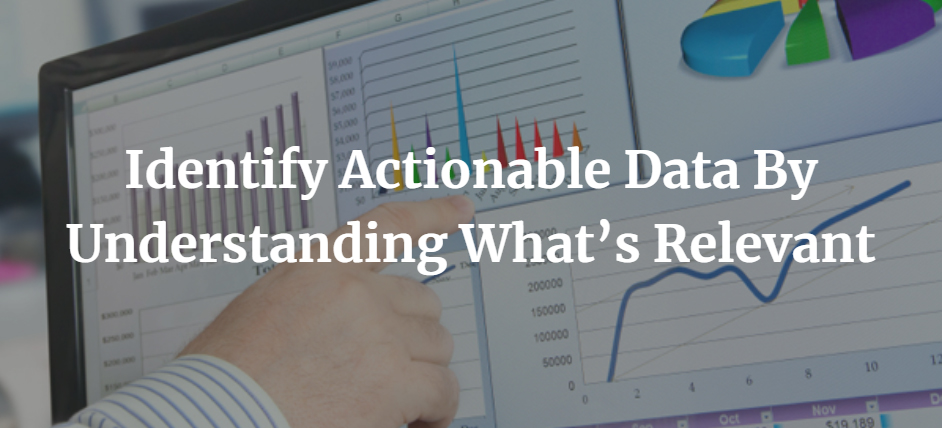Identify Actionable Data By Understanding What’s Relevant
In 1998, the Journal of Personality and Social Psychology published a paper titled On the Pursuit and Misuse of Useless Information. This paper examined the effects of making decisions based on unimportant information.

“Decision makers often pursue noninstrumental information,” the paper’s summary reads, “information that appears relevant but, if simply available, would have no impact on choice…. Consequently, the pursuit of information that would have had no impact on choice leads people to make choices they would not otherwise have made.”
Discerning relevant, useful information from a pile of data isn’t easy. In business today, collecting data is a revered activity, and many companies hesitate to throw any information away, for fear they might throw out something good.
But one of the problems is, holding onto every scrap of data and trying to figure out what to do with it can be overwhelming. Sometimes, nothing productive can be done with the information.
The pressure to do something is real, but taking action without knowing what’s essential is a quick and all-too-easy way to tank a business.
Most firms have started to streamline their processes by using dashboards to display only relevant information. For instance, these KPI examples demonstrate how various industries select the most important and relevant data to monitor.
Aggregating specific data into a single space prevents you from getting lost in minutiae. Granted, there are almost infinite ways to sort and look at data, but if you get lost in the details, you won’t know where or when to take action.
In a world where data drives business decisions, it’s critical to zero in on the relevant data before taking action, if you want to ensure you make the right moves. Data can drive every business decision you make.
Sometimes those decisions entail tweaking your SEO strategy, fine-tuning your email marketing campaign, or narrowing your target market. The data that drives such decisions is fairly straightforward, but what happens when you start collecting data you’re not sure how to use?
How can you distinguish relevant data from useless minutiae?
We are all swimming in a sea of irrelevant data
Big data is everywhere. So is irrelevant data. Given only a few software programs, anyone can start collecting a vast amount of data about their website visitors and customers.
With data insight tools, you can discover who your visitors are, where they live, their age, gender, browser, and operating system used to access your website.
If you run a PPC ad campaign on Google or Facebook, that will give you even more detailed information on your customers, such as which books they’ve read, and their political affiliations. The amount of data you may collect is endless, but what’s practically useful to you will more likely fit in the palm of your hand.
You need actionable data, but not all actionable data is useful
When you’re looking at large amounts of information, never forget that if you can’t act on it, it’s not useful. For example, if 75% of your customers use a MacBook Pro to make a purchase, unless you’re selling MacBook-specific products, that data would be irrelevant.
However, some data could be interpreted as actionable when in fact it’s minutiae. For example, say you notice your highest-performing employees have a greater level of fitness than others. You can act on that data, but buying your employees a gym membership, for example, probably isn’t going to make a difference in their work performance.
Be willing to run experiments with your data
Once you’ve managed to identify relevant data and created a plan of action, you need to run experiments to see if your efforts are having their intended impact.
“Unless we’re willing to run experiments to see what works,” Bob Nease writes for FastCompany, “we’re left with our intuition when deciding what to do in light of all that new information. And that means that sometimes we’ll make things worse rather than better.”
Know your limits of expertise
Data might be useful to one business or another, but it won’t be useful to you if you can’t do anything with it. For example, knowing who’s buying your product sounds important, but unless that knowledge helps you to focus your sales efforts on better prospects, it doesn’t really have any value.
Consequently, if you’re not a sales expert, taking action based on knowledge derived from data collection might possibly do more harm than good. In that case, save the data and hire an expert to interpret it and propose suitable action.
Throw away more data than you save
As a general rule, you should be throwing away more data than you hang on to. There are only 24 hours in a day (and you don’t want to be awake and active for all of those 24, anyway), so you’d be well advised to prioritize your data collection efforts.
